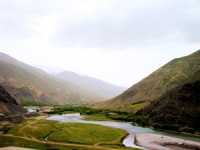Water sharing between Central Asian countries has been conflicting for quite a long time already.
Hydro-hegemony in the Amu Darya basin
The water allocations in the Amu Darya Basin reflect the colonial legacy of the Soviet Union: the downstream riparian states, Turkmenistan and Uzbekistan, were utilized to produce cotton while upstream Tajikistan used water for energy production and it was anticipated to increase its reservoir capacity further to provide water storage and facilitate agricultural production downstream, Afghanistan and Kyrgyzstan were considered simple producers of water without having a real claim to it. Independence manifested inequitable water allocations, giving rise to the perception that especially Uzbekistan is the hydro-hegemon in the Amu Darya Basin. But the post-Soviet basin may be, in fact, without a hydro-hegemon. Data presented in this paper suggest that the riparian states are currently engaged in strategies of resource capture, by increasing their water demand without renegotiating agreements. In addition, while during the Soviet hegemony the increase of reservoir capacity upstream was perceived as ‘integration’ into the larger framework, today the re-emergence of these plans are perceived as a threat. The analysis of different aspects of hydro-hegemony, such as control over data, current discourses and control over provision infrastructure, demonstrates that Uzbekistan's control over the flows is hardly consolidated.





